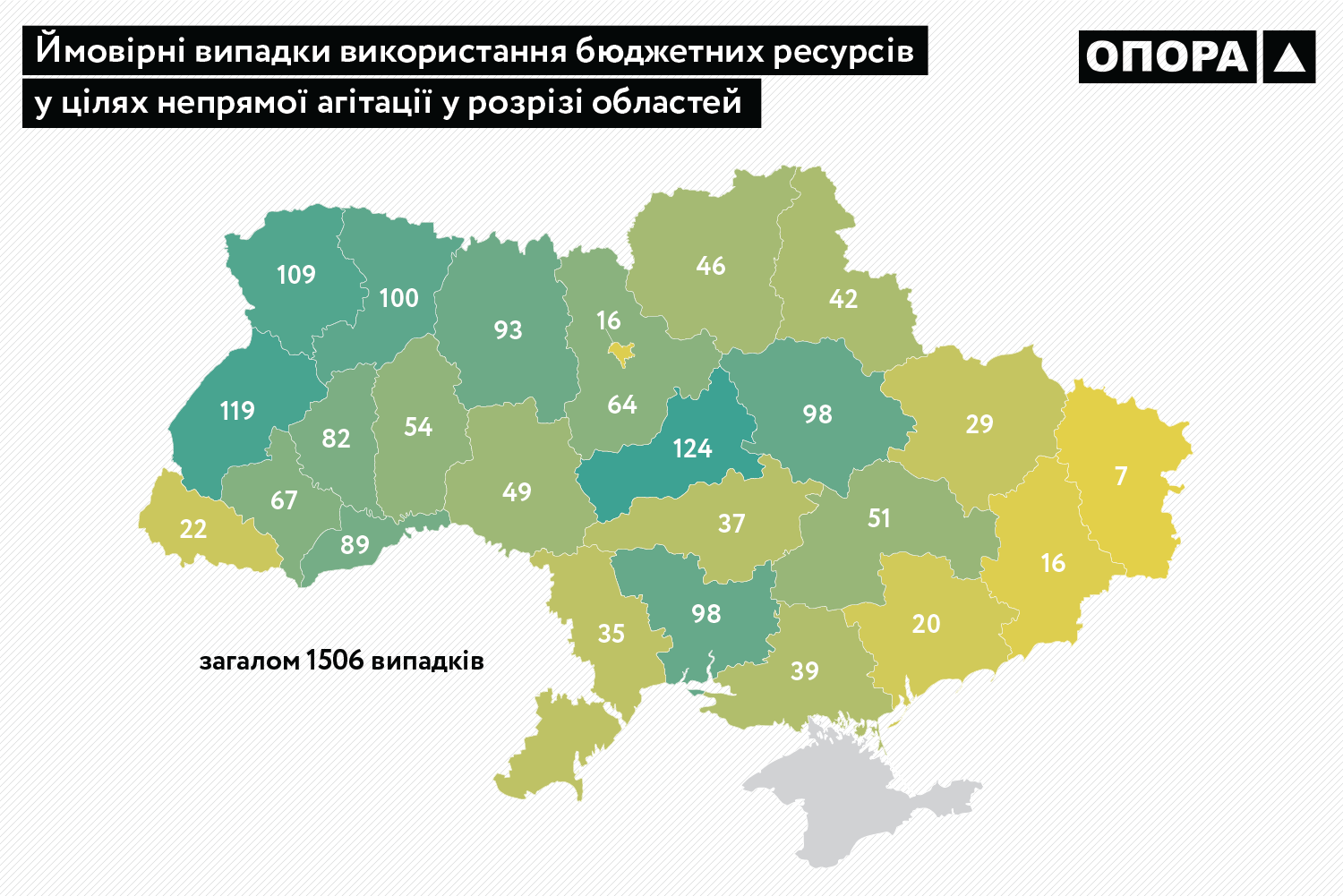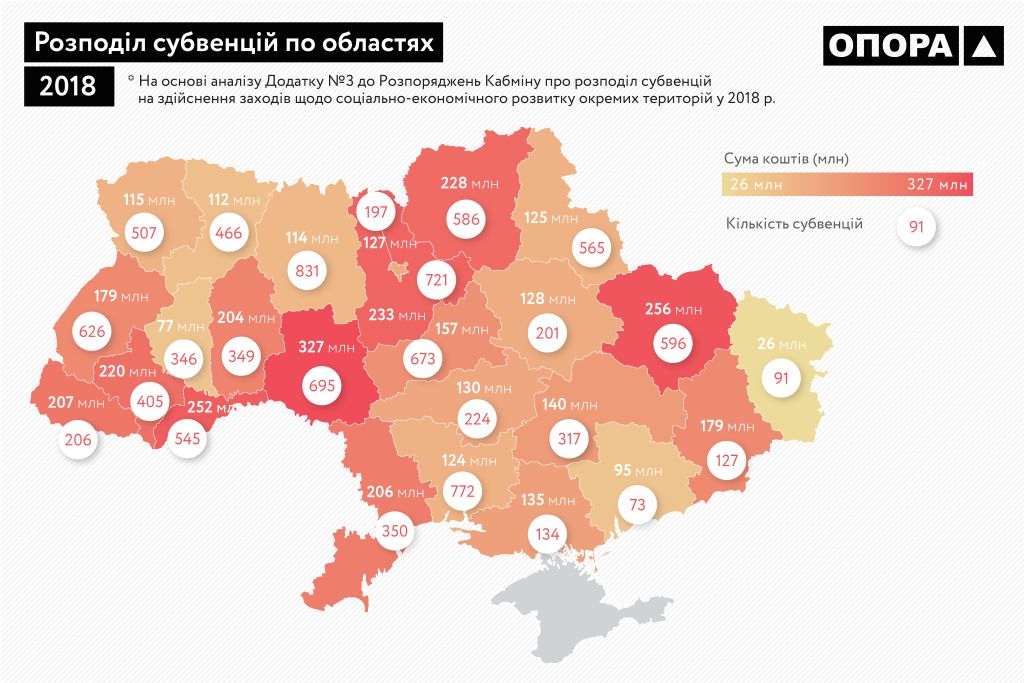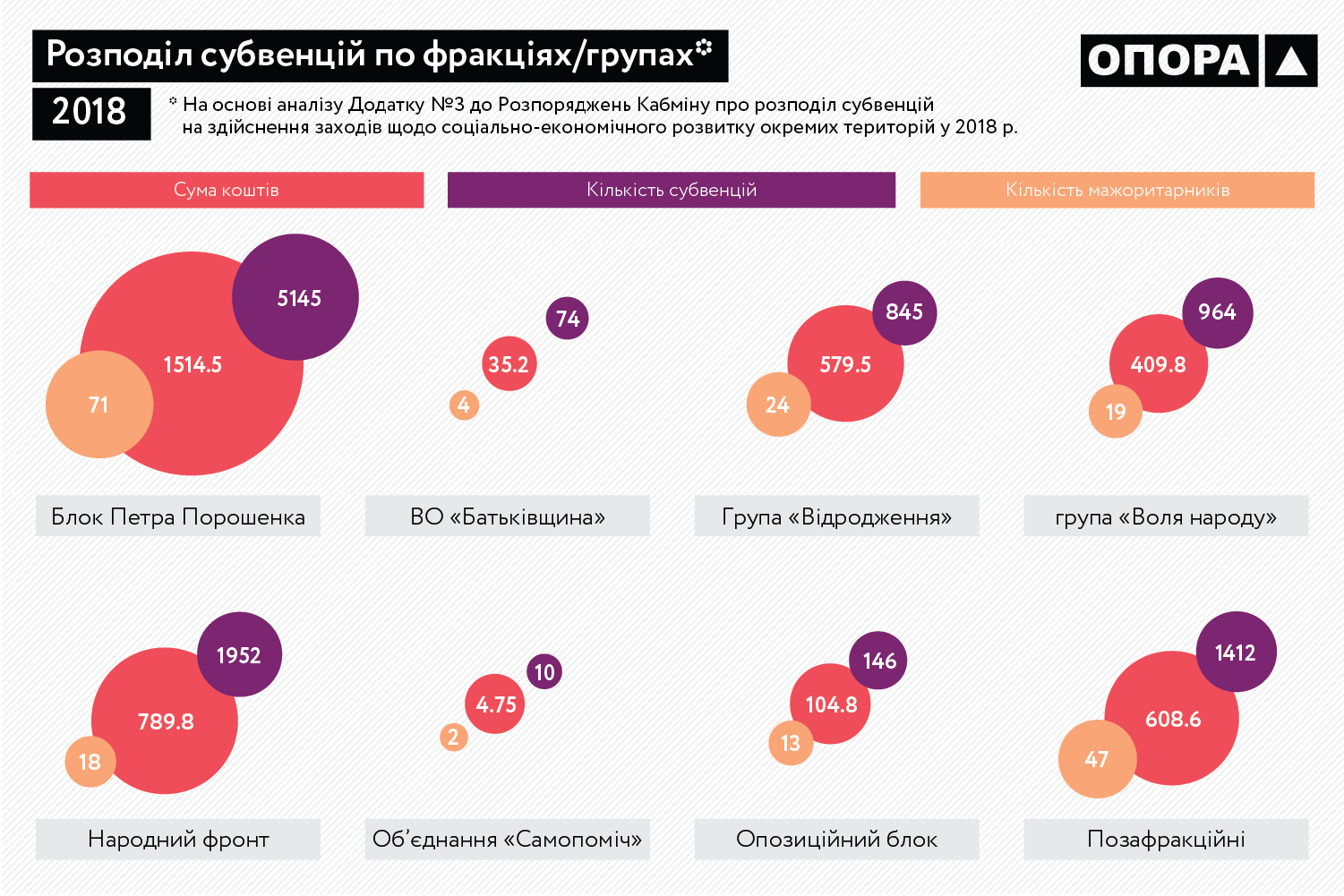Subvention on social and economic development of regions. Such simple but very sweet words. Especially for those who gain electoral advantages on them. Now, let me tell everything step by step.
To begin with, a subvention is a form of financial assistance to local budgets from the state budget, aimed at specific purpose (goals). Subventions are allocated in different sectors: medical, educational, for the formation of infrastructure in UTCs. However, we are particularly interested in subvention on social and economic development. Why? The answer is very simple - it has nontransparent mechanisms of distribution, and MPs often use it for campaigning purposes.
What numbers are we talking about? In 2016-2018, the Cabinet of Ministers distributed around 12 billion UAH. Almost 2 billion have been distributed already in 2019.
How it happens
The Ministry of Finance of Ukraine is major provider of subventions. Oblast and Kyiv city state administrations, as well as MPs, submit their proposals regarding the objects to be financed to the very Ministry of Finance. In 2017, the Ministry of Finance established a Commission on Preparation of Proposals for the Distribution of Subventions. This Commission is in fact the center of decision-making on which objects should receive budget financing. Based on its decision, the Ministry of Finance submits proposals on the distribution of subventions to the Cabinet of Ministers for approval.
However, there are several problems:
- The distribution of subventions is being made "in manual mode", because there are no criteria for the choice of objects that should be financed.
- There are no public consultations on which objects need to be financed first.
- Activities of the Commission on Preparation of Proposals for the Distribution of Subventions is not covered by media, its meetings are not announced. MPs comprise an absolute majority in the Commission, what may affect the preparation of propositions concerning distribution of subventions. For example, commission members may be guided by political interests instead of economic expediency, when choosing objects for subvention financing.
What are the consequences?
The lack of clear criteria for the selection of objects to be financed results in scattered financing among projects, which priority may be put in question. As a result, it's impossible to reach a long-term efficiency of subventions.
There are too many small amounts in the list of funded projects. For example, purchase of mirrors, printers, laptops, furniture, bicycles, stage costumes, kitchen equipment, tennis tables, sports grounds, etc. In 2018, 37% of state-funded objects amounted less than 50,000 UAH, in 2016 - 13%. It turns out that the closer parliamentary elections are, the more budget funds are spent on small objects.
Although the funds are being spent on small objects, the fact that MPs use budget funds in campaigning purposes is a bigger problem. In fact, they want to get back into the Parliament again thanks to these funds. Talking about the amount, it's 50 million UAH in average per district a year. That's a nice bonus, isn't it? And especially, when this money is spent on small objects and do something "good" for the entire district. It's cool when you visit every settlement and present everywhere something like printer to a local school.
Let's take a look on some examples. For example, 119 playgrounds were constructed in election district of non-faction MP Taras Batenko (Lviv oblast) in 2017. Their total cost amounted 6.6 million UAH. The MP or members of his team were present at openings of these playgrounds. These events were actively covered by the media. At these openings, the gratitude was expressed to the MP for the money raised.
Play and sports grounds are being widely constructed in the district of MP Igor Huzia (Volyn oblast), and in the district of Oleksandr Dekhtiarchuk (Rivne oblast) - computer equipment is being purchased. It is interesting that in 2017 budget year, 104 identical amounts were allocated on subventions for social and economic development (8300 UAH each) for the purchase of computer equipment for various budget institutions of the district.
At the same time, MPs often deliberately forget to inform their voters that this or that object was built (reconstructed) or the equipment was funded from the state budget. Moreover, sometimes MPs talk as if these funds were theirs, or belong to some kind of "fund of MPs", which, in fact, doesn't even exist. Especially ingenious MPs, make subventions as a prize in sports competitions.
Now, a bit of statistics. Thus, from June 2018 to January 2019, there were more than 1,506 such cases used by 137 majoritarian and 24 party-list MPs in 155 constituencies. This is 78% of the total amount, or 88% of constituencies that regularly receive subventions from the state budget.

According to OPORA's research findings, the distribution of subventions between different regions is quite uneven. Thus, similar by population and area oblasts receive diametrically opposite amounts of financing for development. This is also true about electoral districts.

ПThe distribution of subventions has become "politicized". We can see this from the fact that the amounts, allocated on districts of MPs, differ significantly. For example, districts of MPs from the People's Front receive 44 million UAH in average, and districts of MPs from the Samopomich Union - almost 3 million.

How to change the situation?
To thoroughly answer this question, OPORA inquired51 experts, who hold positions in local government and local self-government bodies, are MPs or members of their teams, or are representatives of non-governmental organizations working on the subject of subventions.
Key findings of the survey:
- To establish transparent mechanisms for distribution of subventions and assessment criteria for projects, which are going to receive subvention financing.
- To introduce public consultations at local level, aimed to determine which objects are going to be financed first from state subventions.
- To introduce a competitive selection for projects that can be funded from subventions.
- To ensure an even distribution of subventions between different oblasts and districts.
- To ensure the reporting on implementation of projects funded from state subventions.
- To conduct an independent audit of subvention financing efficiency.
- To publish orders of the Cabinet of Ministers on distribution of subvention financing for social and economic development in open data format.
- In order to ensure a long-term result from subventions, it is necessary to provide the minimum amount of a subvention for social and economic development per an object or measure.
- To indicate information about sources of financing on objects that are built or reconstructed with the use of subventions on social and economic development.
- To ensure the publication of announcements, minutes, agendas, transcripts and audio recordings of Commission's meetings to prepare proposals for distribution of subventions.
Besides that,experts do not approve popularization of MPs “bringing” subventions to their districts. In order to prevent their use for campaigning purposes, transparent mechanisms for their distribution should be introduced.
As we can see, there is no other way than transparent distribution. On the next parliamentary election, we will see how many MPs will benefit from campaigning at the cost of state budget funds to re-elect into parliament. Hope not many.